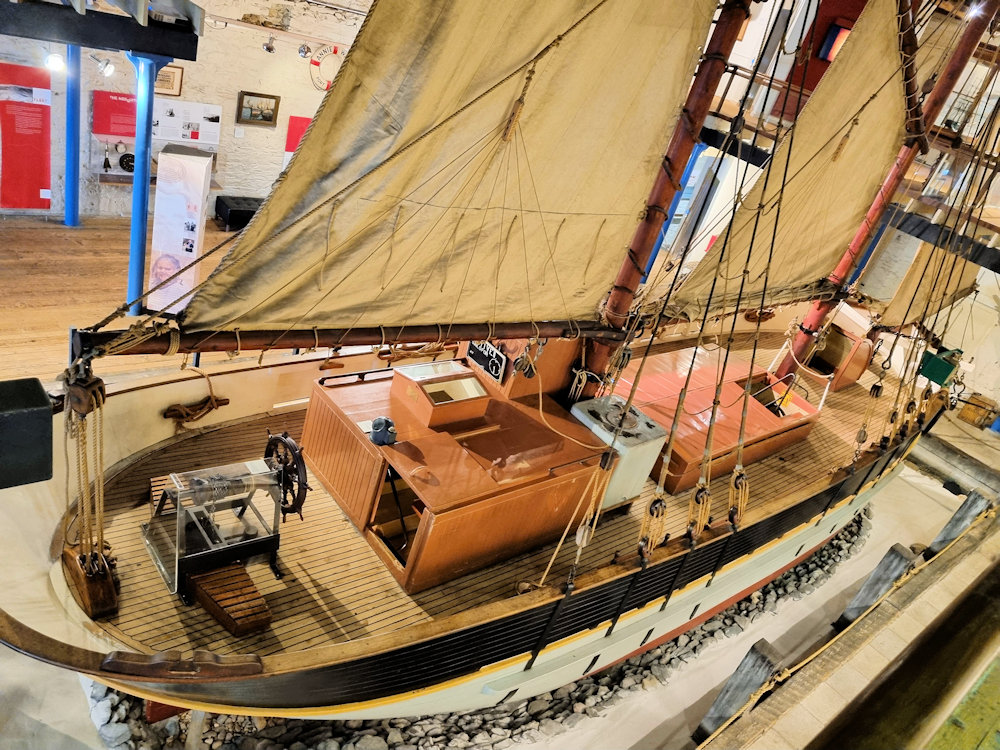South Australian Maritime Museum
Origins and Establishment
The South Australian Maritime Museum, located in Port Adelaide, preserves and celebrates the state’s relationship with the sea. Established in 1986, it was the first of three major museums managed by the History Trust of South Australia. The museum emerged during a period when industrial change was reshaping the historic port, and it played a vital role in preserving maritime heritage that might otherwise have been lost.
Port Adelaide has been South Australia’s maritime heart since the colony’s foundation in 1836. Ships arriving from Britain and other parts of the world carried settlers, cargo and news, linking the new colony to global trade. As time passed, the port became central to South Australia’s economic growth, exporting copper, wheat, and wool. By the late 20th century, however, modernisation and container shipping had changed its working character. Recognising the cultural value of the port’s past, the History Trust established the Maritime Museum to record its history and share it with future generations.
The museum’s home, a cluster of restored heritage buildings, includes the Bond Store, originally constructed in the 1850s. Once a warehouse for storing imported goods, it now serves as the museum’s main exhibition space. The building’s solid sandstone walls and timber beams create a fitting environment for maritime displays, creating a wonderful atmosphere.
Exhibitions and Collections
The museum’s exhibitions explore South Australia’s maritime story from colonisation to the present. Visitors encounter themes of migration, trade, exploration, shipbuilding, and naval service. Each gallery combines historical artefacts, multimedia displays, and reconstructed environments to immerse visitors in the seafaring experience.
On entering the museum the first exhibits us a full side replica off the ketch Active II. Visitors are permitted to board the boat allowing you to see below decks as well as the out side of the boat. A mezzanine floor above the exhibit provides an overhead view of what the ketch looks lake.
One of the museum’s most evocative exhibits is Passengers, which traces the experiences of immigrants who arrived by sea during the 19th and early 20th centuries. The display features recreated ship cabins and interactive diaries that describe long voyages from Britain, Germany, and elsewhere. Visitors can hear stories of hardship, homesickness, and hope, understanding how migration by sea shaped South Australia’s population and culture.
Another permanent gallery, Working Port, examines Port Adelaide’s industrial heritage. Photographs, ship models, and tools reveal how dockworkers, pilots, and sailors sustained the port through its busiest decades. The exhibition also highlights how maritime labour influenced community identity, from stevedores’ unions to shipyard families.
The museum’s Exploration and Discovery gallery focuses on early maritime exploration of South Australia’s coast. Maps, instruments, and journals from the 18th and 19th centuries illustrate how navigators such as Matthew Flinders and Nicolas Baudin charted unknown waters. The display conveys both the scientific curiosity and national rivalries that drove European exploration.
Historic Vessels and Maritime Heritage
The museum’s collection extends beyond its buildings. A fleet of restored historic vessels forms an essential part of its storytelling. Among these, the ketch Falie and the steam tug Yelta hold particular importance.
The Falie, launched in 1919, spent decades trading along the South Australian coast and was later used as a training vessel for the Royal Australian Navy. Today, she remains a beloved part of the state’s maritime heritage, though she now serves mainly as a preserved artefact rather than an active ship.
The Yelta, launched in 1949, is South Australia’s only operational steam tug. Fully restored, it occasionally operates for special events, offering the public a rare chance to experience steam-era technology in motion. Its engine room, polished brass fittings, and coal-fired boiler capture the craftsmanship of mid-20th-century marine engineering.
During our visit both the Falie and Yeltsin were docked, allowing us to see them up close. Even better, during our dolphin cruise on the Port River we caught a great view off both from the water.
Another key feature is the Port Adelaide Lighthouse. Originally erected at the entrance to the Port River in 1869, it was relocated to the museum precinct in the 1980s. The striking red iron structure now serves as both a landmark and an educational display.
Together, these vessels and structures connect the museum’s indoor exhibits with the physical maritime landscape that inspired them.














To find more things to see and do in South Australia, click here.
Our photos are available for purchase on

Leave a Reply